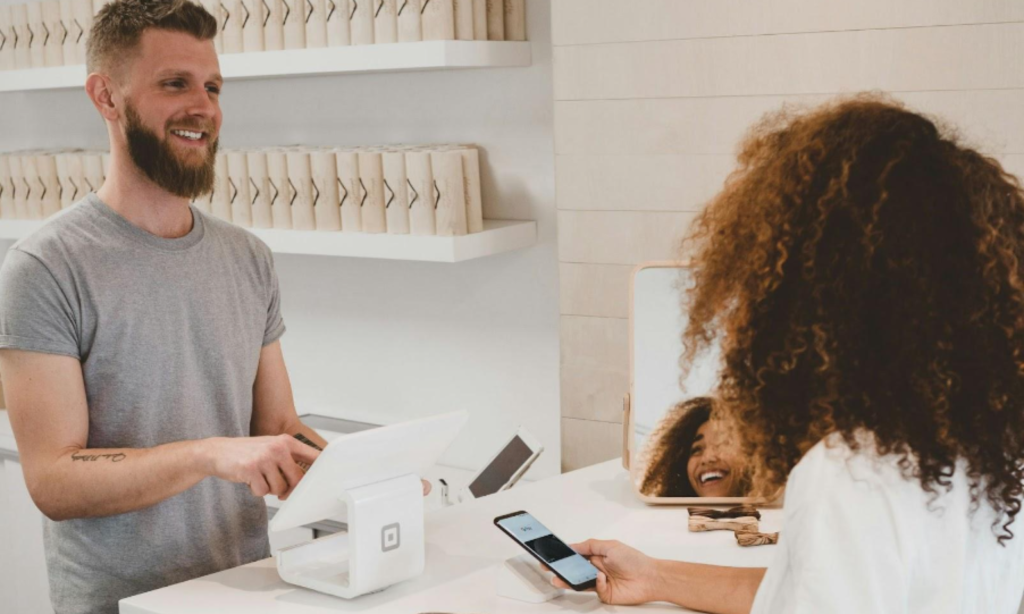Loyalty programs are essential strategies designed to retain customers by rewarding them for continued patronage. These programs typically offer points, discounts, or exclusive travel benefits to customers who make repeat purchases, thus encouraging long-term relationships and fostering brand loyalty. Loyalty programs boost customer retention and provide valuable insights into consumer behavior, helping businesses tailor their offerings to meet customer needs better.
Conversely, gamification involves integrating game-like elements into non-game contexts to enhance engagement and participation. This can include using points, badges, leaderboards, and challenges to motivate users to take specific actions. By making tasks more enjoyable and rewarding, gamification taps into intrinsic human desires for competition, achievement, and recognition, making everyday activities more engaging.
When gamification is applied to Loyalty programs, it creates a powerful synergy that benefits businesses and customers. Customers enjoy a more interactive and entertaining experience, which increases their engagement and satisfaction. Businesses, in turn, see higher customer retention rates, greater brand loyalty, and more valuable customer insights. This union transforms traditional loyalty programs into dynamic, game-like experiences that keep customers coming back and turn them into enthusiastic brand advocates.

What Is Gamification in Loyalty Programs?
Gamification involves incorporating game-like features into loyalty programs to boost customer participation, satisfaction, and brand loyalty. Here are the key components:
1. Progression Flow
Progression flow is a structured path that customers follow as they engage with the loyalty program. It often involves tasks or challenges designed to encourage specific behaviors, such as:
Filling Out Profiles: Customers might be asked to complete their profiles to earn initial points or rewards.
Entering Prize Draws: Regular prizes encourage continued engagement, with customers earning entries through purchases or activities.
Participating in Challenges: These could be seasonal or thematic challenges where customers complete specific actions to earn rewards.
This structured flow keeps customers engaged by providing clear objectives and milestones.
2. Clear Prizes
Rewards must be well-communicated and enticing. Effective gamification ensures that customers know exactly what they can earn and how to achieve it. Typical rewards include:
- Bonus Points: Extra points that can be redeemed for various perks.
- Freebies: Free products or services as a direct reward for loyalty.
- Services: Complimentary services such as free shipping or exclusive access to events.
- Partner Rewards: Benefits from partnered brands, adding value to the loyalty program.
Clear communication of these prizes motivates customers to participate actively.
3. Luck Element
Adding an element of luck makes the program more exciting. Examples include:
- Spin the Wheel: Customers can spin a virtual wheel to win random rewards.
- Mystery Boxes: Opening a box to reveal a surprise prize.
- Lucky Draws: Randomly selecting winners from participants.
This element of unpredictability adds thrill and can significantly increase engagement.
Fun Fact: Did you know that businesses that have implemented gamified loyalty programs observe a 22% improvement in customer retention and a 15% rise in brand awareness?
4. Constant Incentives
Regular messages and notifications play a vital role in maintaining engagement. These can include:
- Reminders: Notifying customers about tasks they need to complete.
- Promotional Messages: Informing them about new challenges or limited-time rewards.
- Encouragement: Motivational messages that inspire customers to keep participating.
Consistent communication ensures that customers remain engaged and informed about opportunities to earn rewards.

The Importance of Visible Progress in Gamified Loyalty Programs
Allowing customers to track their progress is a crucial aspect of gamified loyalty programs. Visual indicators such as progress bars, levels, or badges significantly enhance the overall customer experience by providing clear, real-time feedback on their journey toward rewards. This transparency makes the process more engaging and significantly boosts customer motivation and satisfaction.
Motivates Continuous Engagement
When customers see their progress towards a reward, it creates a strong incentive to keep participating in the loyalty program. Progress bars, for example, visually illustrate how close they are to earning a reward, making the goal tangible and within reach.
This ongoing visibility keeps the reward in mind, encouraging customers to complete more actions to achieve it. The anticipation of reaching the next milestone or level can be a powerful motivator, driving continuous engagement and interaction with the brand.
Provides a Sense of Achievement
The psychological impact of visible progress is akin to completing levels in a game. Each completed task or milestone unlocks a sense of accomplishment and satisfaction, reinforcing the customer’s efforts.
Badges and levels, in particular, serve as markers of achievement, recognizing and celebrating the customer’s journey. This sense of achievement enhances the overall experience and fosters a deeper emotional connection with the brand. Customers feel valued and appreciated, increasing their loyalty and likelihood of recommending the brand to others.
Leveraging Technical Solutions
Companies can leverage advanced solution platforms to implement these sophisticated gamified elements. These platforms often come equipped with a range of technical features that facilitate the integration of visual progress indicators into loyalty programs. They provide businesses with the tools to create customized progress bars, badges, and levels tailored to specific customer behaviors and preferences.
By utilizing these platforms, companies can:
Easily Integrate Visual Indicators: Platforms offer user-friendly interfaces and customizable templates to add progress-tracking features seamlessly.
Access Real-Time Analytics: Companies can monitor customer engagement and adjust the program dynamically to maximize effectiveness.
Enhance User Experience: Advanced features ensure that visual indicators are functional and aesthetically pleasing, enhancing the overall user experience.
Incorporating such technical solutions allows businesses to stay competitive and meet the evolving expectations of customers accustomed to engaging, game-like experiences in their daily interactions with brands.
By investing in these platforms, companies can ensure that their loyalty programs are effective in retaining customers and creating memorable and rewarding experiences.

The Impact of Gamification on Customer Loyalty
Implementing gamification in loyalty programs offers a multitude of benefits that significantly enhance customer loyalty and overall business success. By infusing game-like elements into these programs, businesses can transform the customer experience, making it more engaging and rewarding. Here’s a deeper look at the key benefits:
Enhanced Effectiveness
Gamified loyalty programs are inherently more compelling than traditional ones. The incorporation of game mechanics such as challenges, rewards, and progression systems makes these programs more interactive and enjoyable. Customers are more likely to participate in activities that feel like games rather than routine tasks. This increased engagement leads to higher rates of participation, as customers are motivated by the fun and competitive aspects of the program.
Improved Engagement
Interactive elements like points, badges, leaderboards, and progress bars make the loyalty program experience enjoyable and immersive. These features tap into intrinsic human desires for achievement and recognition. As customers complete tasks and earn rewards, they experience a sense of accomplishment that encourages them to keep engaging with the program. This sustained engagement is crucial for building long-term loyalty, as customers who regularly interact with the program develop a stronger emotional connection with the brand.
Boosted Brand Awareness
Fun and engaging loyalty programs are more likely to be shared by customers, both online and offline. When customers enjoy their experiences, they naturally want to share them with friends and family, either through social media or word-of-mouth.
This organic sharing significantly increases brand visibility and awareness. Moreover, the competitive and social aspects of gamification, such as leaderboards and social sharing features, further amplify this effect by encouraging customers to showcase their achievements and invite others to join the program.
Increased Customer Lifetime Value
Customers who regularly engage with a gamified loyalty program tend to spend more over time. This is because the program continuously incentivizes them to make repeat purchases and participate in various activities to earn rewards.
As customers accumulate points and unlock rewards, they are more likely to stay loyal to the brand and increase their spending to achieve higher tiers or exclusive benefits. This increased spending boosts the overall customer lifetime value, making each customer more profitable for the business in the long run.

Leveraging Gamification for Maximum Impact
To fully realize these benefits, businesses can leverage advanced gamification platforms that offer a suite of tools to create and manage engaging loyalty programs. These platforms provide:
Customizable Game Mechanics: Tools to design tailored challenges, rewards, and progression systems that align with the brand’s objectives and customer preferences.
Real-Time Analytics: Insights into customer behavior and program performance, enabling businesses to make data-driven adjustments to maximize engagement and effectiveness.
Seamless Integration: Solutions that easily integrate with existing systems, ensuring a smooth implementation process and consistent user experience.
By embracing gamification and utilizing these advanced platforms, businesses can create loyalty programs that not only retain customers but also convert them into passionate brand advocates. The result is a more engaged, loyal, and valuable customer base that drives sustained business growth.
People also read: Choosing a White-Labeled Travel Platform Provider? Here’s What to Look For
Best Practices for Gamification in Loyalty Programs
To successfully implement gamification, consider these best practices:
1. Understand Your Audience: Tailor the program to the preferences and behaviors of your target customers.
2. Keep It Simple: Ensure that the rules and rewards are easy to understand.
3. Balance Skill and Luck: Combine skill-based challenges with luck-based rewards to maintain interest.
4. Regularly Update Content: Introduce new challenges and rewards to keep the program fresh.
5. Encourage Social Sharing: Allow customers to share their achievements on social media to enhance engagement and attract new participants.
Conclusion
Gamification takes traditional loyalty programs to a whole new level by making them fun and engaging. By adding features like progress tracking, clear rewards, an element of luck, visible progress, and regular incentives, businesses can really boost customer engagement and loyalty.
Whether it’s using a prize wheel, treasure hunt, or points-based challenge, gamification can make your loyalty program much more exciting. This approach not only helps retain customers but also turns them into enthusiastic advocates for your brand. Incorporate gamification to enhance your loyalty program and see the difference it makes!




